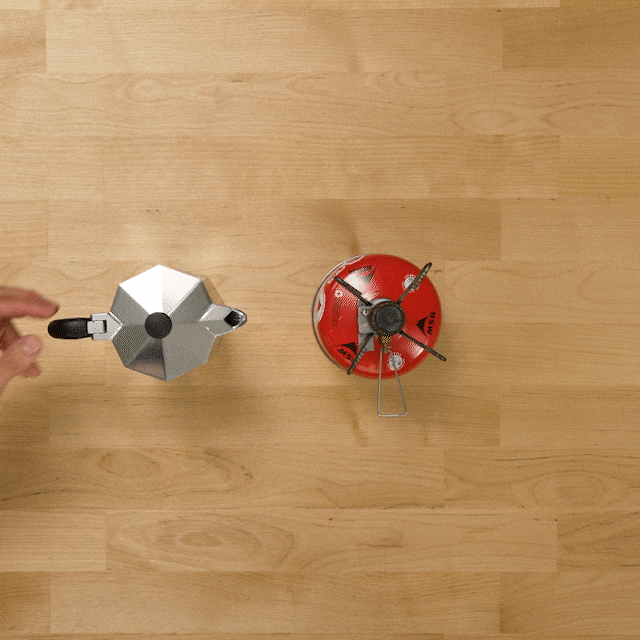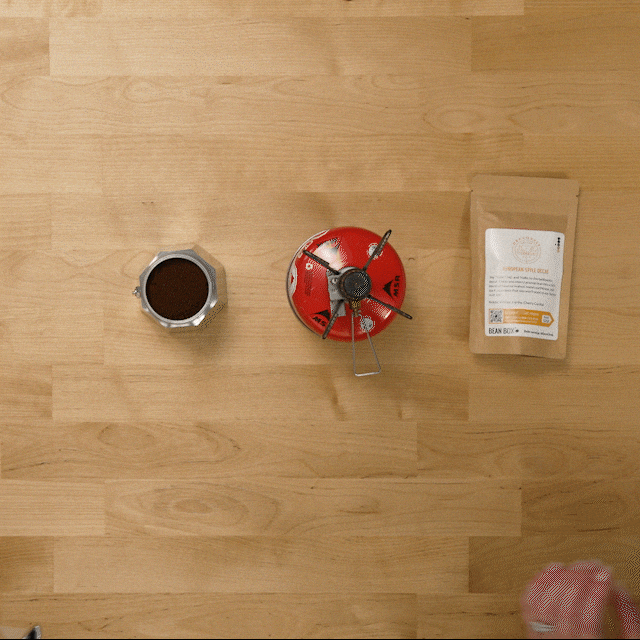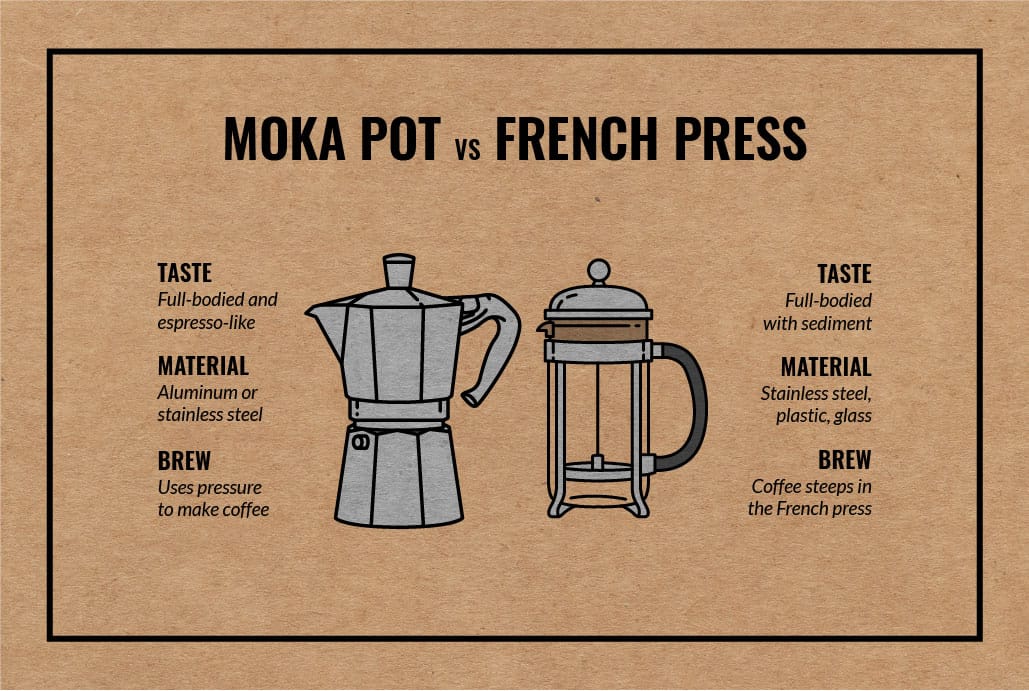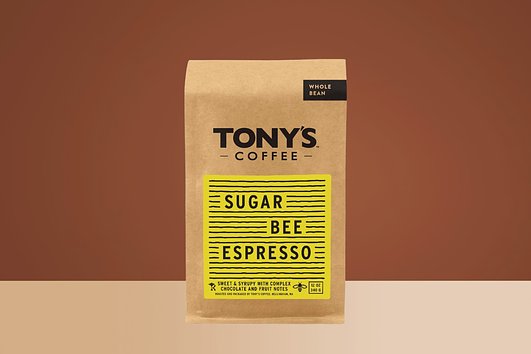How to Use a Moka Pot for Espresso-Like Coffee
![]() Maryna Gray
• October 13, 2021
Maryna Gray
• October 13, 2021
Like the record player and mom jeans, the Moka pot has made a serious comeback in recent years, specifically during the COVID-19 pandemic. When restaurants and cafes closed, many people re-discovered the classic coffee maker along with the joys of drinking specialty coffee at home.
Bialetti—the pioneering company behind the Moka pot—almost went bankrupt in 2018 when it struggled to compete with the popularity of pod coffee makers. Today, it's found in 90 percent of Italian households.
Read on to learn more about this storied coffee maker, from our best Moka pot recipe to how it compares to a similar machine: the espresso maker.
TABLE OF CONTENTS
- What Is a Moka Pot?
- Moka Pot Accessories
- How to Use a Moka Pot
- The Best Coffee for a Moka Pot
- How to Clean a Moka Pot
- Moka Pot Comparisons
What Is a Moka Pot?
The Moka pot makes coffee by forcing boiling water and steam through coffee grounds and out through a mesh filter. Eight-sided and made of aluminum, the Moka pot comes in two variations: electric and stove top.
It creates an espresso-like taste, and is the closest you can get to espresso without using an actual espresso machine. In fact, the Moka pot is often referred to as a “stovetop espresso machine.”
Technically, you need an espresso machine to brew true espresso, as the Moka pot doesn’t create the same level of pressure as an espresso machine. But if you want to make lattes or cappuccinos and don’t have an espresso machine (or don’t want to dish out the necessary funds for a good one), the Moka pot is an adequate alternative.

Moka Pot Accessories
In addition to a Moka pot and fresh coffee beans, you’ll need the following equipment:
- Heat Source: You can use the stove or a hot plate; if camping, you can also use the Moka pot over an open fire.
- Coffee Grinder: Use a burr grinder to get a table salt consistency.
- Coffee Scale: Use a digital coffee scale like the HARIO V60 Drip Coffee Scale.
- Kettle: We prefer an electric gooseneck kettle for brewing, but a standard tea kettle also works.
How to Use a Moka Pot
Follow these step-by-step instructions for using a Moka pot.
Step 1: Heat Your Water
Set your kettle to boil, or, if you’re using a temperature controlled kettle, bring it to 205°F.
Step 2: Pour the Water

Add your heated water to the bottom of the Moka pot, filling to the line inside the carafe.
Step 3: Weigh Your Moka Pot on the Scale

Put the metal filter basket into the brewer and place it on the scale. Tare your scale and add 15g (or 3 tablespoons) of freshly ground coffee into the filter. Or, just use one 1.8-ounce bag of Bean Box coffee! Use your finger to level out the grounds, or, using a heat-resistant towel, give it a gentle shake to level out the grounds. Note: don’t tamp (or compress) the grounds like you do with espresso, as this will cause excess pressure and potentially lead to a coffee explosion (re: How to Clean a Moka Pot).
Step 4: Put the Moka Pot Together

Remove the brewer from the scale. Screw the top and bottom together using a heat-resistant towel.
Step 5: Turn on the Heat

Turn on your heat source to medium-low and put the Moka pot on top. Make sure the handle is not subjected to the heat.
Step 6: Wait for the Hiss

Leave the top lid open. The coffee will begin to come out of the spout. Close the lid. When you hear a hissing sound, remove the Moka pot from the heat source and allow the coffee to finish brewing.
Step 7: Enjoy!

Pour your coffee, let it cool a bit, and enjoy!
The Best Coffee for a Moka Pot
Dark roasts and/or blends formulated for espresso are a good choice for the Moka pot since it produces a strong-bodied cup of coffee.
How to Clean a Moka Pot
It’s not common, but Moka pots can explode if not properly cleaned after each use (or, as noted above, if you use too much water or tamp the grounds).
Most Moka pots are not dishwasher safe. Instead, you’ll need to hand wash your Moka pot with warm water, a soft-bristled brush, and some unscented dish soap before thoroughly drying it. Be sure to empty, rinse and dry the filter, too.
Just like any other coffee maker, the Moka pot also needs a descaling (removal of mineral buildup) every so often, especially if you have hard water. Hard water contains something called limescale, a white, chalky substance that, despite your best efforts, will find its way into your Moka pot regardless of how much you regularly clean it. I will link to a blog about descaling here.
Moka Pot Comparisons
Moka Pot vs. Espresso Machine

While the Moka pot and espresso machine yield a similar tasting coffee, there are some significant differences between the two:
- Time: The Moka pot takes about five to seven minutes to brew coffee, whereas it’ll take you less than a minute to pull a shot of espresso.
- Ease of Use: The Moka pot is simple to use, while an espresso machine is a bit more complex.
- Maintenance: Because of its simple design, the Moka pot is also easier to clean than an espresso machine.
- Portability: You can easily travel with the Moka pot since it’s fairly small and can even be used over an open fire while camping. For obvious reasons, you really can’t travel with an espresso machine.
- Cost: The Moka pot is cheaper in terms of cost; you’ll pay about $30 for a 3-Cup Bialetti, whereas a quality espresso machine goes for a few hundred dollars (at least).
- Coffee: The Moka pot makes a rich, full-bodied coffee, while the espresso machine yields an ultra concentrated coffee with crema, or microbubbles.
Moka Pot vs. French Press

The Moka pot and French press have more in common than the Moka pot and espresso machine. For instance, they’re about the same size, making them both portable for travel. They also take about the same amount of time to brew a cup of coffee (5 minutes or so), and produce a similar tasting coffee. They’re priced the same, too, generally going for anywhere from $15 to $75. But there are a few notable differences between the Moka pot and French press:
- Taste: The Moka pot makes a strong, espresso-like coffee; the French press makes a full-bodied coffee which often includes sediment.
- Material: The Moka pot is made of aluminum or stainless steel, while the French press comes in stainless steel, plastic and glass variations.
- Brew: The Moka pot relies on pressure to make coffee, while coffee steeps in the French press.
We want to help you make better coffee at home. Our recommendations are our own, and never sponsored. If you see something you love and buy it through our links, we may receive an affiliate commission (thanks for that!).





